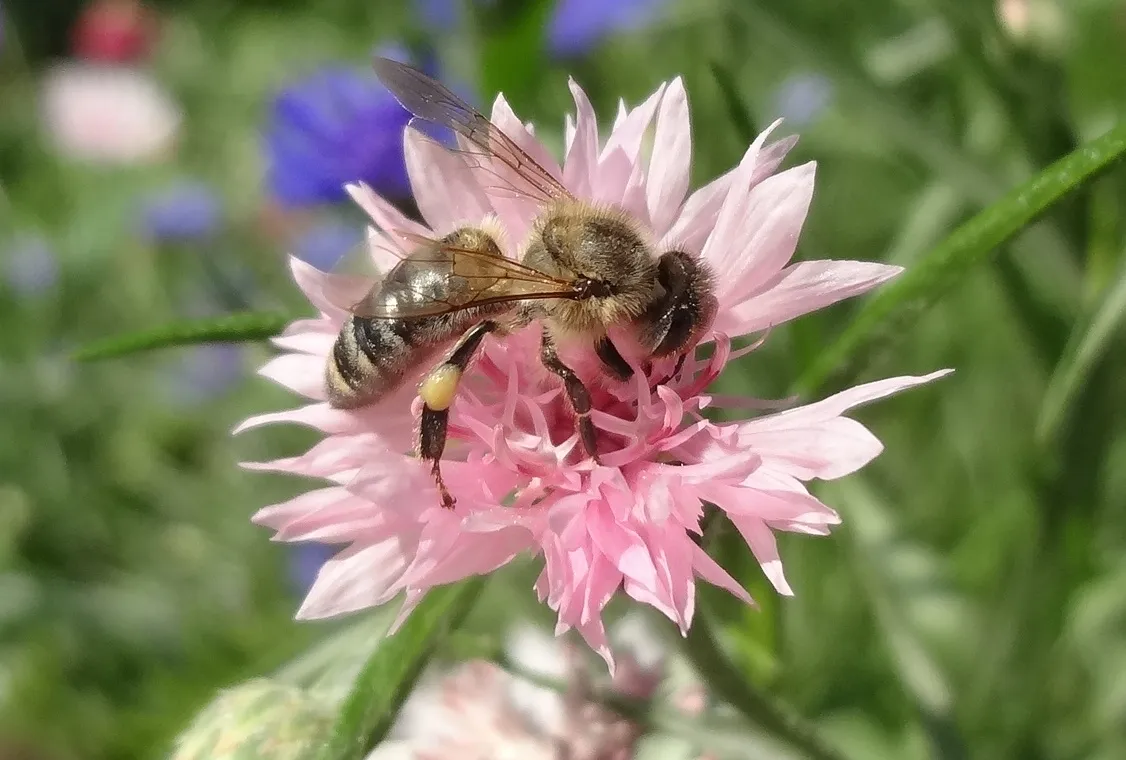
Interesting facts from the life of bees. The life of one bee is only one month. One bee can collect only 0.5 grams of nectar and some pollen. But every bee does not fly out for nectar every day, so in its entire life one bee can collect no more than 15 grams.

Interesting facts from the life of bees. Each hive is home to from up to sixty thousand bees - therefore each hive (bee house) produces tens of kilograms of honey per year, which is loved not only by people, but also by forest animals. Especially bears love to feast on honey.
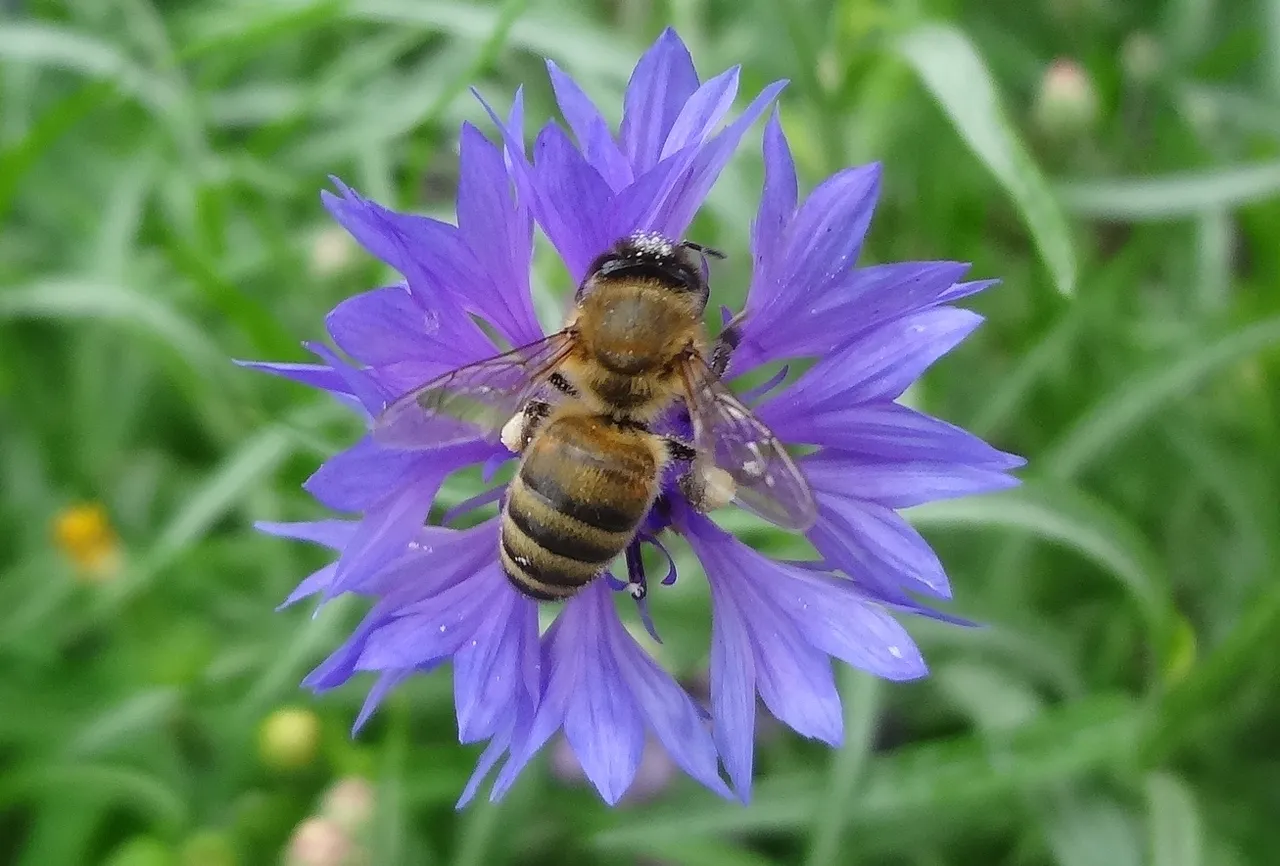
Interesting facts from the life of bees. In one flight, the bee collects up to 50 mg of pollen. In one summer season, a colony of bees (one hive) can collect pollen up to 55 kg. This is enough to feed a family of bees in the hive and still leave it for humans.
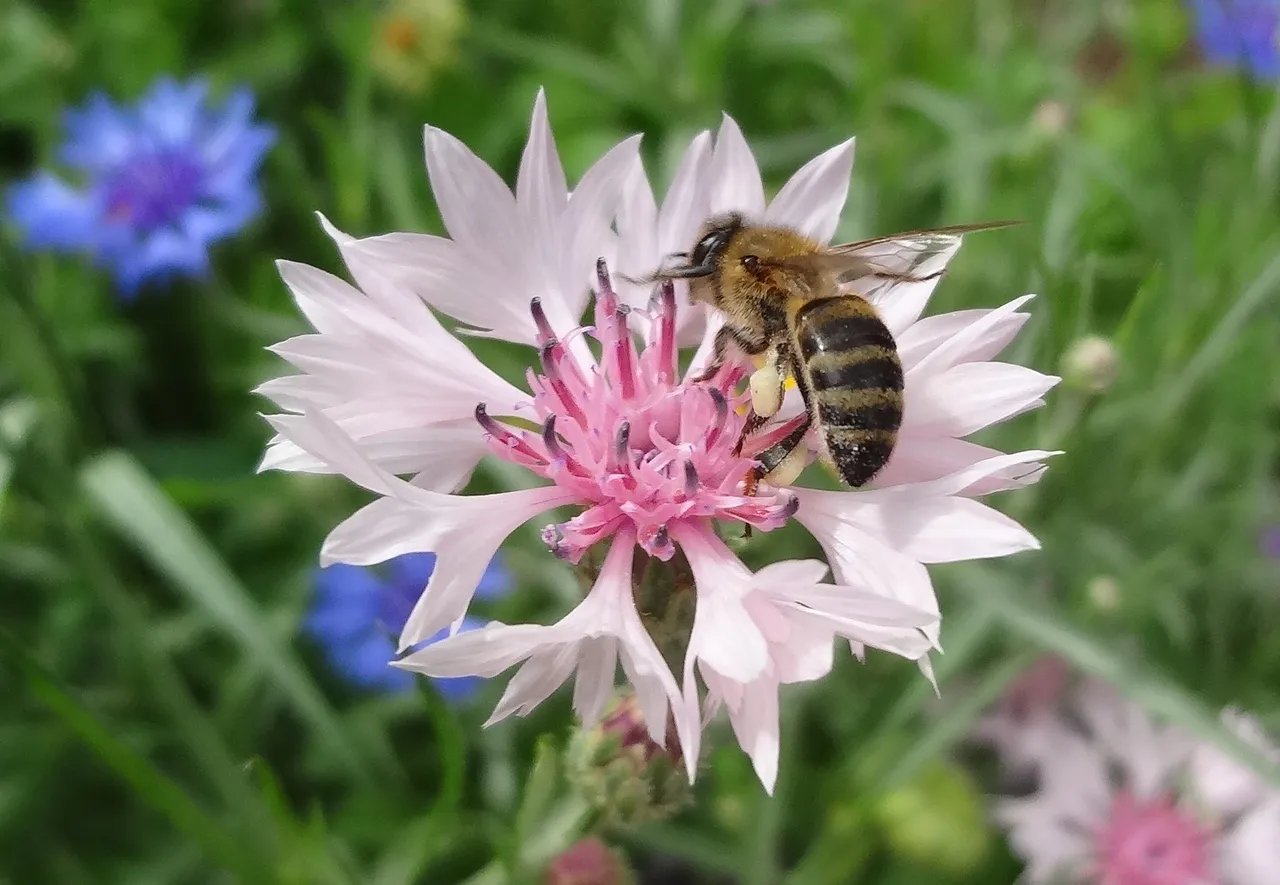
Interesting facts from the life of bees. A family of bees (one hive) per day (if the weather is sunny and there is no rain) collects pollen in an amount of 1 to 2 kg. At the same time, bees usually consume a little bee a year. And bee bread is also useful for humans.

Interesting facts from the life of bees. Bees are amazing and unique insects in nature. Small creatures managed to organize the production of products (like honey). But man (like a drone) was never able to synthesize any of the products produced by bees.

Interesting facts from the life of bees. And a little about the bee product itself. Honey is a unique natural product with a huge number of valuable properties. It can be eaten, added to food, it is actively used in medicine. It is used by humans for any diseases.
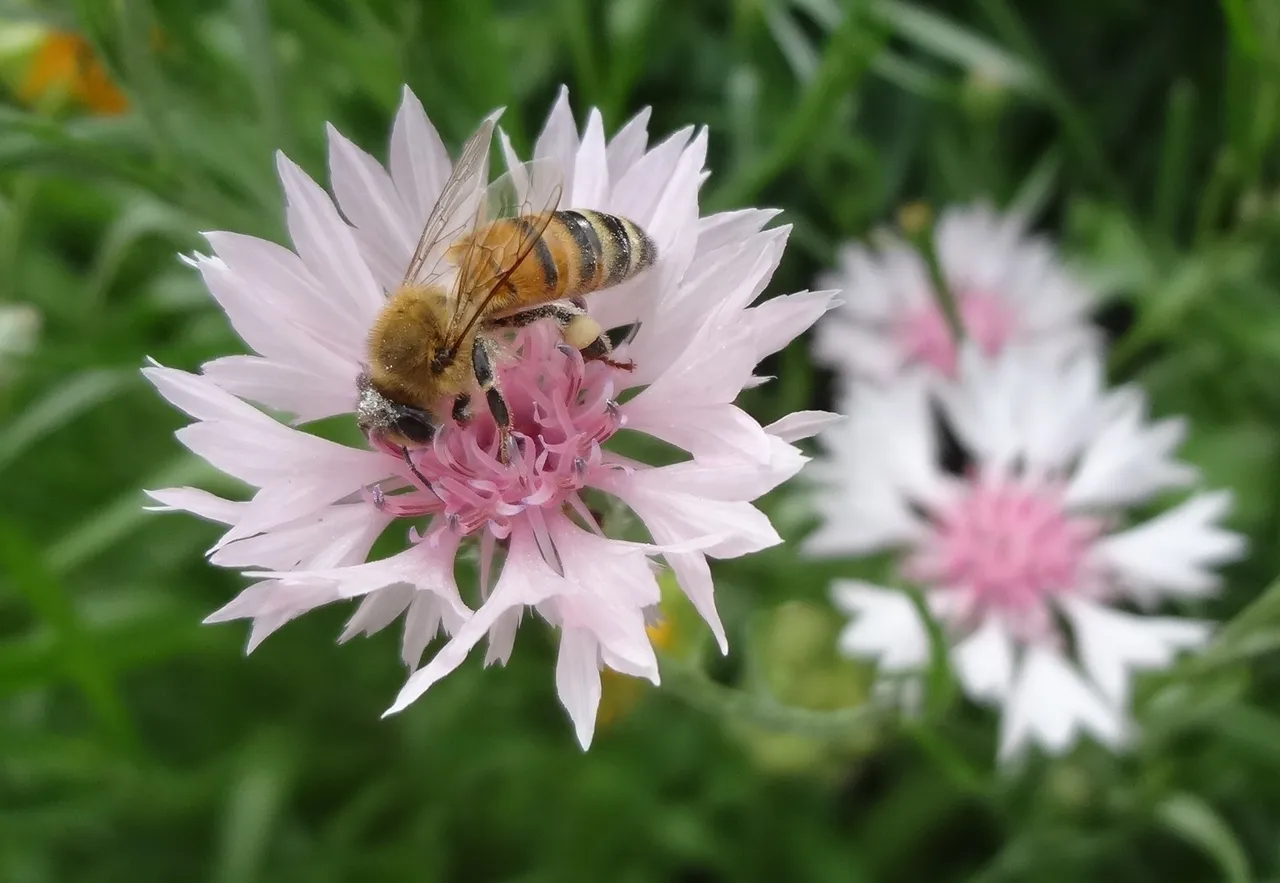
Interesting facts from the life of bees. Before collecting honey, bees send scouts from the hive in search of flowers, where there is enough nectar and pollen (honey plants). When the scouts find flowers, they "dance" - they convey the information that they have found to the bees.
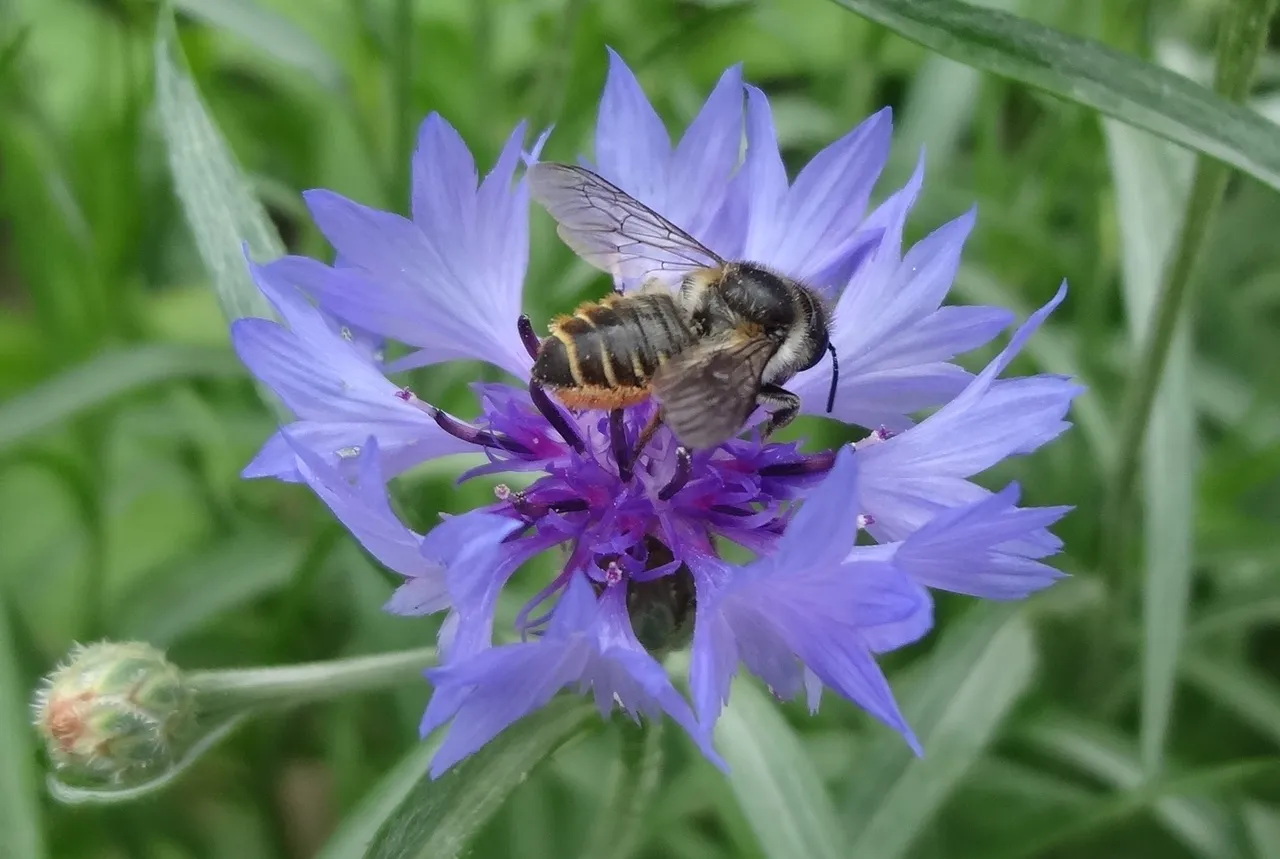
Interesting facts from the life of bees. Scout bees fly out every day in search of new flowers (honey plants). There is a break only in bad weather. In good summer weather, during the honey harvesting season, you can constantly see how the bees collect honey and carry it to the hive.
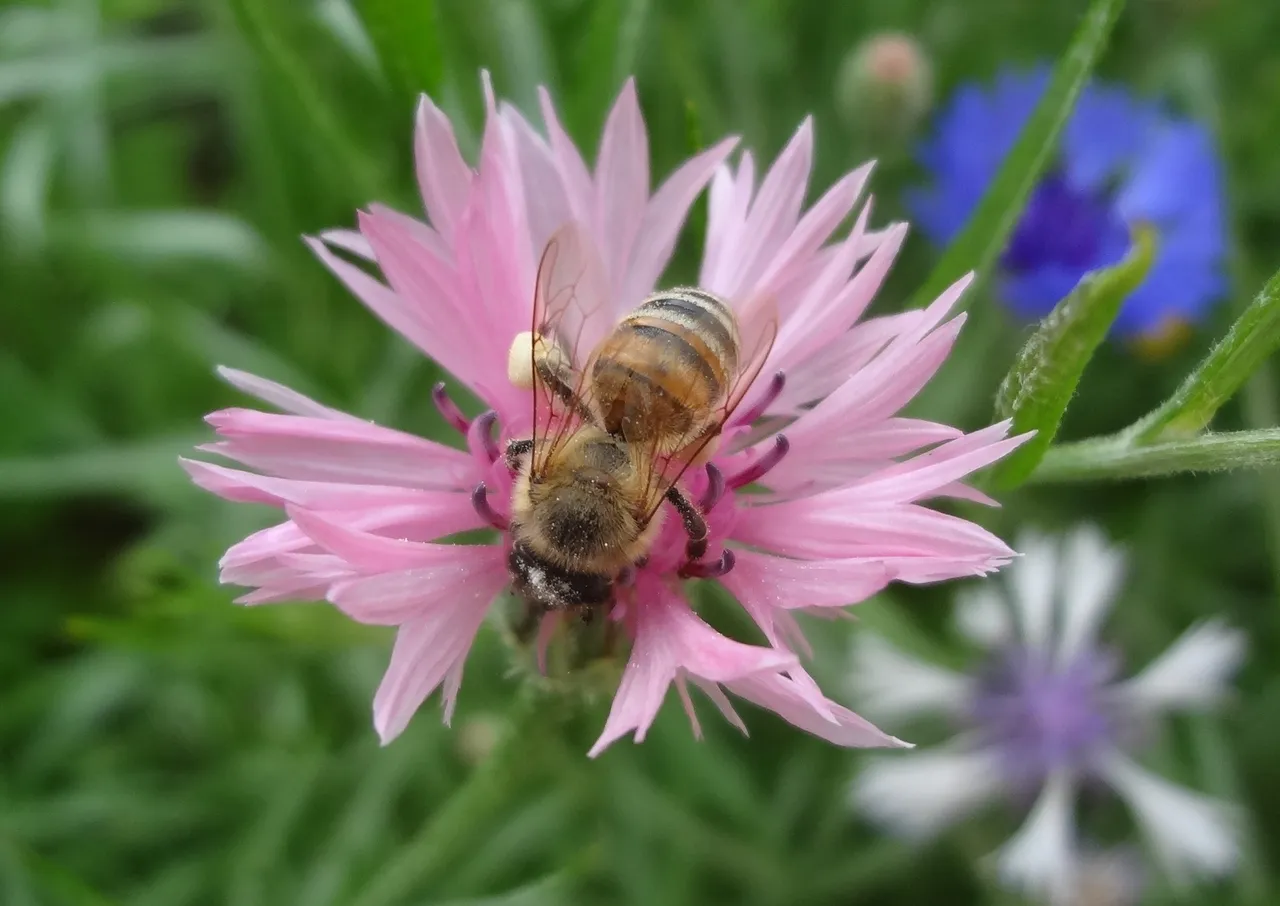
Interesting facts from the life of bees. In the cell (combs), future honey remains for a couple of days, and then young bees begin to deal with it. They also add their enzymes to the nectar and transfer it to the cells, gradually filling all the cells completely. When the honey is ripe, it is already collected by a person, leaving part of the honey to the bees for their life. Such is life in nature.

Summer, July. Life in the countryside outside the city. My garden, flowers and bees. Collecting pollen and nectar is only the initial stage in the production of honey for bees. It is attended by bees of all generations (as we know). The nectar collected from the flowers is transferred to the hive and stored there. In the hive, the bee moves the harvest into cells (honeycombs). Bees sort the nectar - part of the honey goes into production - and it is this honey that we eat, and part of the honey remains to feed the bees in winter. In my photographs, bees collect nectar on Vasilki. Up to sixty thousand bees and more can live in one hive. Each bee has its own role in the hive, which it fulfills for the entire community. The bees in the hive have their own leaders, workers, guards and scouts. Bees from time to time drive their producers (drones, males) out of the hive and they die, and some even kill. What is a bee colony (hive)? This is a community of individuals for the production of food (honey) and building material (honeycomb). Flying to work in the field in summer, a bee collects only three types of necessary and useful resource: nectar, pollen and resin. After going through the production in the beehive, these resources are converted into honey, bee bread, propolis and wax. And all this is needed for the bees. But a person takes much more from the hive - honey, pollen, bee bread, wax, propolis, milk, poison and dead. Such is the amazing nature and such is life.
-original photo;
-first publication;
-camera Sony 16.2.
For insertion into a post on Ecency and Hive, the size is reduced to 1280 x 960 points..
Photo taken - Sony 16.2 - 3x Zoom, Vario-Tessar lens.

